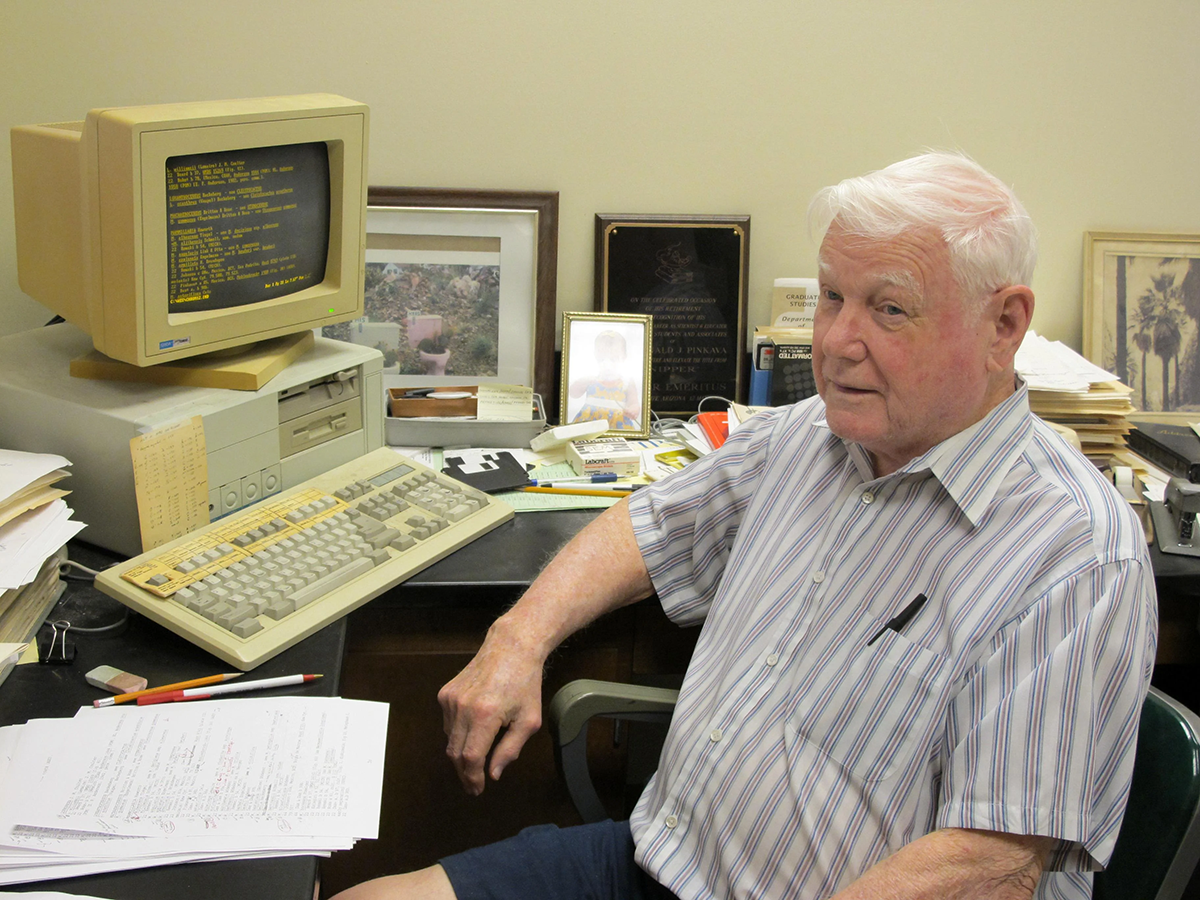Faculty:

- Leslie R. Landrum, Curator emeritus
- Kathleen B. Pigg, Professor
- Donald J. Pinkava (1933-2017)
- Marty Wojciechowski, Associate Professor, retired
Recent and current graduate students:
- Luke Ramsey-Weigman, PhD
- Annie Weaver-Bryant, PhD
- Brittany Burgard, MS
- Dona LaGuardia, MS
- Daniel Moses, MS
- Soon Flynn, PhD
- Zane Robertson, The Genetic Identity of Rumex orthoneurus. (MS July 2024).
- Kristen Countryman, December 2023. The Effects of Wildfire on the Sonoran Desert Seed Bank. MS
- Anthony Motta - Nest Composition and Architecture of the Curve-billed Thrasher (MS 2022).
- Bryce Sutter - Structural Responses of Bouteloua eriopoda to Changes in Annual Precipitation:Interactive Effects of Amount and Duration (MS 2022).
- Zach Berry - Flora of the Phoenix Zoo (MS 2020).
- Cole Larson-Whittaker - Flora of the Verde River (MS 2020)
- Alison Willis - Systematics of Echinomastus erectocentrus var. acunensis (MS 2019).
- JP Solves - FLora of Las Cienegas National Conservation Area (MS 2020)
- Kara Baron – Flora of the Cave Creek Regional Park and studies of reestablishment of Arizona Upland Plant communities after fire disturbance (MS 2018).
- Albatool Albediwi - Digitization of herbaria in Saudi Arabia (MS 2017).
- Robert Madera – Screwbean mesquite (Prosopis pubescens) die-off: Population status at restored and unrestored sites in the Lower Colorado River watershed (MS May 2016).
- Danika Setaro – Temperature Effects on Germination in Southwest Riparian Zones Across an Aridity Gradient (MS Dec 2016).
- Dustin Wolkis - Plant ecology of arid-land wetlands; a watershed moment for ciénega conservation (MS May 2016).
- Lane Butler – Ecological effects of stream flow permanence on butterfly and plant communities of Sonoran Desert streams (MS May 2015)
- Tyna Yost - Amsonia kearneyana (Apocynaceae) Kearney’s Blue Star: new insights to inform recovery. (MS December 2015).
- Frankie Coburn – Flora of the Upper Verde River, Yavapai County, Arizona (MS Dec 2015)
- Darin Jenke – The Phoenix Four Rivers flora, Maricopa County, Arizona (MS May 2011)
- Jacqueline Betsch – Plant community composition along the historic Verde River irrigation System (MS December 2010).
- Doug Newton – Vascular flora of the Eagletail Mountain region, La Paz-Yuma Counties, Arizona (MS Dec 2010)
Bethany Lund –The vascular flora of the Hummingbird Springs Wilderness, Maricopa County, Arizona. (MS November 2008).
